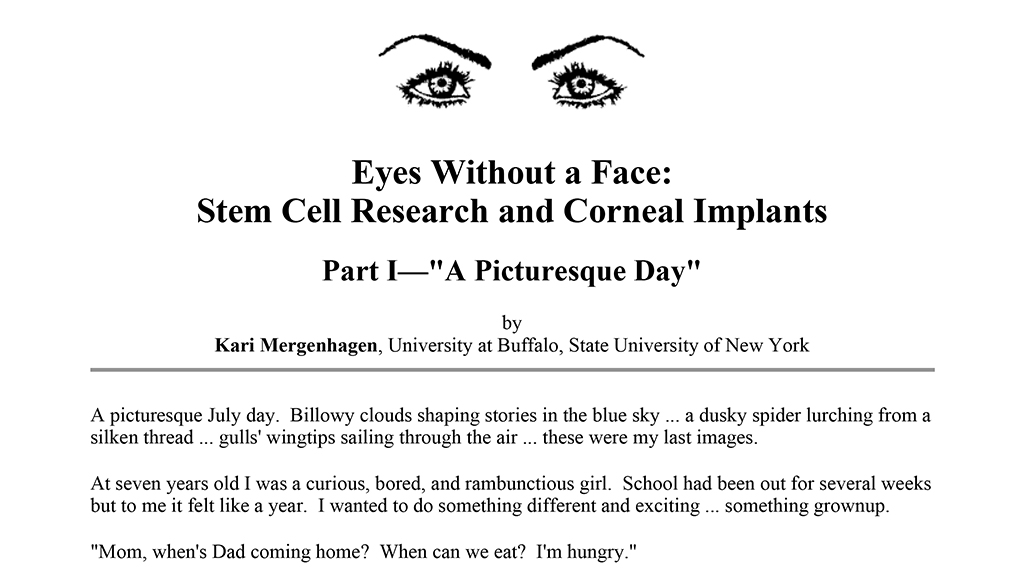Abstract
Although blind since childhood as the result of an accident, Lucy has never given up hope that one day she might see again. So, when her ophthalmologist tells her about a study being conducted at the University Medical Center that might help her regain some sight, Lucy is eager to sign on. This case explores the use of adult stem cells and amniotic membranes to restore vision after traditional transplants have failed. It would be appropriate for students of biology, physiology, and health-related fields.


